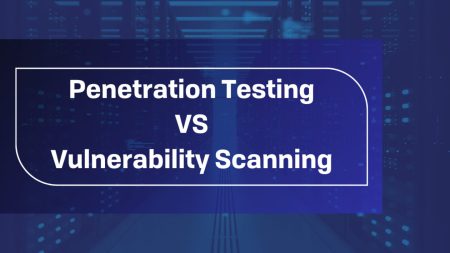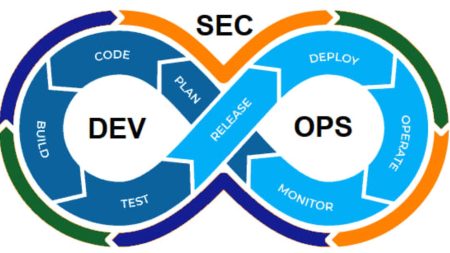Cyber threats today are relentless. With attackers leveraging increasingly sophisticated methods, defending digital landscapes is no longer optional – it’s survival. Cyber security penetration testing is a vital practice that mirrors these threats, uncovering vulnerabilities before real attackers do. This article dives deep into the mechanisms, benefits and nuances of penetration testing in cyber security while offering actionable insights for individuals and businesses alike. Let’s explore.
What is Penetration Testing in Cyber Security?
So, what is cybersecurity pentesting? Imagine a castle with towering walls and guarded gates. Even the mightiest fortification can have hidden cracks, weak hinges, or blind spots. Cyber security penetration testing serves as the modern-day siege on digital systems. It is a controlled attempt by ethical hackers to penetrate security defenses, exposing flaws so they can be addressed before malicious actors exploit them. At its core, cybersecurity penetration testing evaluates an organization’s defenses under real-world conditions. It seeks to answer critical questions: Can an unauthorized user gain access? If breached, how far can the damage extend? In today’s hyperconnected world, this practice is more essential than ever.
The Growing Need for Cyber Security and Penetration Testing
Basically, statistics paint a grim picture. According to a 2023 study by IBM, the average cost of a data breach globally has climbed to $4.45 million. Worse, many breaches remain undetected for an average of 200 days. These chilling figures underscore the urgent need for proactive measures like penetration testing in cyber security.
But why penetration testing? Isn’t basic security enough? Obviously, the answer lies in the stealth of modern attackers. Just as a silent predator studies its prey, cybercriminals probe networks for unpatched vulnerabilities, unsecured APIs or misconfigured systems. Although, without rigorous cyber security testing methods, these weaknesses remain hidden.
Take, for instance, ransomware – a threat costing businesses billions annually. In 2022, over 70% of ransomware victims were small to mid-sized enterprises, many of which lacked robust cybersecurity penetration testing services. These attacks exploit cracks invisible to the untrained eye, underscoring why testing is a non-negotiable safeguard.
What are the Types of Penetration Testing in Cyber Security?
- Network Penetration Testing: This form of penetration testing focuses on pinpoint vulnerabilities and shortcomings within a network infrastructure, which includes components like firewalls, routers, and switches.
- Web Application Penetration Testing: This type of cyber security pen testing focuses on web applications to uncover any security flaws that could be exploited by attackers.
- Wireless Network Penetration Testing: This involves testing the security of wireless networks, including Wi-Fi and Bluetooth, to find weaknesses that could allow unauthorized access.
- Mobile Application Penetration Testing: With the rise in mobile applications, it is essential to test their security as well. This type of pen testing in cyber security focuses on identify vulnerabilities in mobile apps that could be used by hackers to access sensitive data.
- Physical Penetration Testing: Unlike the other types of testing, this one doesn’t just focus on digital vulnerabilities, but also examines physical security measures like locks, alarms, and cameras to identify potential weaknesses that could be exploited by attackers.
Now that you know what penetration testing is in cyber security, let us take a look at the methods.
Cyber Security Testing Methods As A Multi-Pronged Approach
Cyber security testing methods vary widely, each tailored to simulate specific threats. Here’s an overview of the primary techniques:
Black Box Testing
This method mimics external attacks by providing the tester with zero prior knowledge of the system. By approaching the target as an outsider, black box testing evaluates the system’s defenses against real-world, external threats.
White Box Testing
In contrast, white box testing operates with complete system knowledge. It simulates insider threats, evaluating weaknesses in the software’s architecture, code, and configurations. This method is often used to test systems housing sensitive data.
Gray Box Testing
Combining the strengths of black and white box testing, gray box testing gives testers partial information, such as login credentials or system documentation. This approach reflects scenarios where attackers have limited insider knowledge, such as via leaked credentials.
Social Engineering Testing
Technology isn’t the only vulnerability; humans are often the weakest link. Social engineering tests assess how easily employees can be manipulated into revealing sensitive information. This technique highlights organizational awareness gaps.
Each of these cyber security testing methods addresses unique threat vectors, making them indispensable components of a holistic testing strategy.
Key Vulnerabilities Uncovered by Cybersecurity Penetration Testing
Penetration testing in cyber security often reveals vulnerabilities hiding in plain sight. Here are some of the most common weaknesses exposed during cyber pentest:
Weak Password Policies
Despite countless warnings, weak passwords remain a leading cause of breaches. In 2023, research indicated that over 50% of users still rely on passwords like “password123” or “admin.” Testing often exposes this Achilles’ heel.
Outdated Software
Legacy systems lack modern patches, making them prime targets. One notable example is the Equifax breach in 2017, caused by a failure to patch a known vulnerability.
Unsecured APIs
Application Programming Interfaces (APIs) are gateways for communication between systems. If poorly secured, APIs can be exploited to bypass traditional defenses.
Improper Network Segmentation
Testing often reveals flat networks where attackers can move laterally after breaching a single point. Proper segmentation limits the scope of potential damage.
By highlighting these issues, cybersecurity pen testing prevents costly breaches before they occur.
The Lifecycle of Cybersecurity Pen Testing
Effective penetration testing follows a structured process. Here’s a step-by-step breakdown:
Planning and Reconnaissance
During this phase, testers define the scope and objectives of the test. Reconnaissance involves gathering intelligence, such as IP addresses, domain details, and public-facing vulnerabilities.
Scanning
Using automated tools, testers scan the system to identify potential weak points, such as open ports or outdated protocols. This phase sets the foundation for targeted attacks.
Exploitation
Testers simulate attacks like SQL injection, phishing, or brute force to breach the system. This phase tests the effectiveness of existing defenses under pressure.
Post-Exploitation Analysis
Once access is gained, testers assess how deeply they can infiltrate the system. They also evaluate persistence mechanisms, such as malware implantation.
Reporting and Recommendations
Finally, a detailed report is provided, highlighting vulnerabilities and suggesting mitigation strategies. This document serves as a roadmap for fortifying the system. Each step is critical to ensuring a comprehensive assessment of the system’s resilience.
Why Opt for Cyber Security Penetration Testing Services?
While in-house testing is an option, professional cyber security penetration testing services offer unparalleled expertise. These experts use advanced tools and techniques, often unavailable to internal teams, to conduct thorough assessments. Moreover, third-party testers bring objectivity. They’re less likely to overlook vulnerabilities due to familiarity with the system.
Outsourcing also ensures access to the latest threat intelligence, which evolves daily in the fast-paced world of cybersecurity. Consider the case of a multinational retail chain that outsourced penetration testing in 2021. The exercise revealed vulnerabilities in their e-commerce platform that could have exposed millions of customer records. Addressing these flaws averted a potential PR and financial disaster.
Challenges and Ethical Boundaries in Penetration Testing Cyber Security
Penetration testing is not without its challenges. The process must be carefully planned to avoid disrupting normal operations. A poorly executed test can inadvertently compromise user data or cause system downtime. Ethical considerations also play a significant role. Testers must operate within agreed-upon boundaries, ensuring no harm comes to users or stakeholders. Clear communication and legal agreements are essential to maintaining trust and accountability.
Emerging Trends in Cyber Security Penetration Testing
The cybersecurity landscape is in constant flux. Here are some emerging trends shaping the future of penetration testing:
AI-Driven Testing
Artificial intelligence is transforming testing by automating repetitive tasks and predicting vulnerabilities. AI-driven tools can simulate sophisticated attacks, saving time and resources.
IoT Security Testing
The proliferation of Internet of Things (IoT) devices introduces new attack surfaces. Specialized testing methodologies are being developed to secure these devices.
Cloud Penetration Testing
As businesses migrate to the cloud, testing must adapt to assess cloud-specific vulnerabilities. Cloud penetration testing ensures data remains secure in these dynamic environments.
Red Teaming
Unlike traditional penetration testing, red teaming involves continuous, multi-vector attacks to evaluate an organization’s entire defense ecosystem. This approach mirrors real-world attack scenarios more closely.
What are the Pros and Cons of Cyber Security Penetration Testing?
Pros of Cyber Security Penetration Testing
- Identifies Weaknesses: Cybersecurity pen testing is a proactive approach to identify vulnerabilities in a system before they can be exploited by malicious attackers. It allows organizations to patch these weaknesses, enhancing overall security and reducing the risk of a harmful breach.
- Inspires Confidence: Regular cyber security and penetration testing can provide peace of mind to stakeholders by demonstrating that the organization is committed to security. It also aids in compliance with various regulatory bodies, which require proof of regular security testing.
- Prevents Financial Loss: By identifying vulnerabilities before they’re exploited, penetration testing can save organizations from the significant financial losses associated with a data breach. These can include fines, loss of customer trust, and costly remediation efforts.
- Real-world Simulation: Penetration testing cyber security mimics real-world attack scenarios, provides an accurate assessment of system security under realistic conditions. This can highlight unexpected vulnerabilities that might be missed in a purely theoretical analysis.
Cons of Cyber Security Penetration Testing
- Limited Scope: As a penetration test is typically focused on known vulnerabilities and common attack vectors, it may miss out on identifying lesser-known or novel threats. This might create a misleading sense of security for an organization.
- Resource Intensive: Conduct a penetration test can be time-consuming and costly. It requires skilled professionals, and depending on the complexity of the systems, it can take a significant amount of time.
- Potential Disruption: Penetration testing involves probing and attacking systems, which can potentially cause network slowdowns or even outages. Although testers take precautions to minimize these risks, disruptions can still occur.
- Only a Snapshot in Time: A penetration test reflects the security of a system at a specific point in time. As new vulnerabilities and threats emerge frequently, a system that’s secure today may not be tomorrow. Regular testing is a must to stay ahead of threats.
Cyber security penetration testing is not a luxury but a necessity in today’s digital battleground. It uncovers vulnerabilities, strengthens defenses, and fosters resilience against evolving threats. From black box testing to AI-driven methodologies, penetration testing in cyber security remains a cornerstone of robust defense strategies. For businesses and individuals alike, the message is clear: Stay proactive, stay secure. Finally, with the right cybersecurity pen testing approach, you can transform vulnerabilities into strengths, ensuring your digital assets remain out of harm’s reach.
Read also interesting article about benefits of outsourcing software development.






